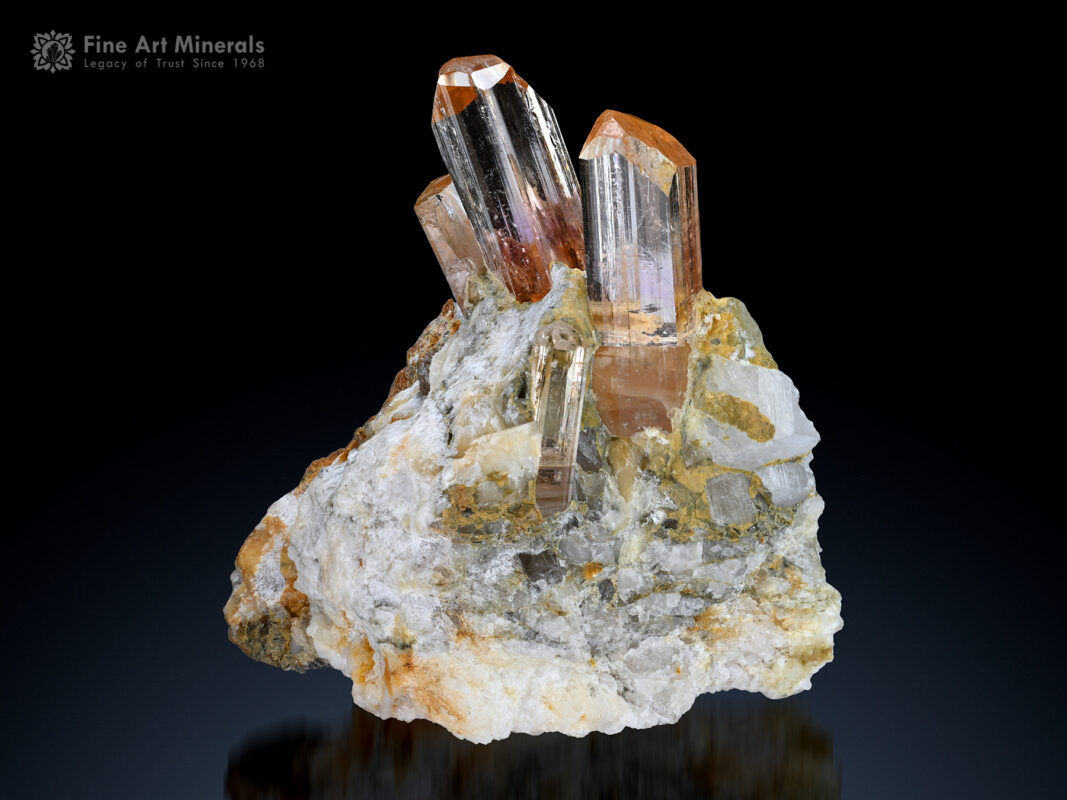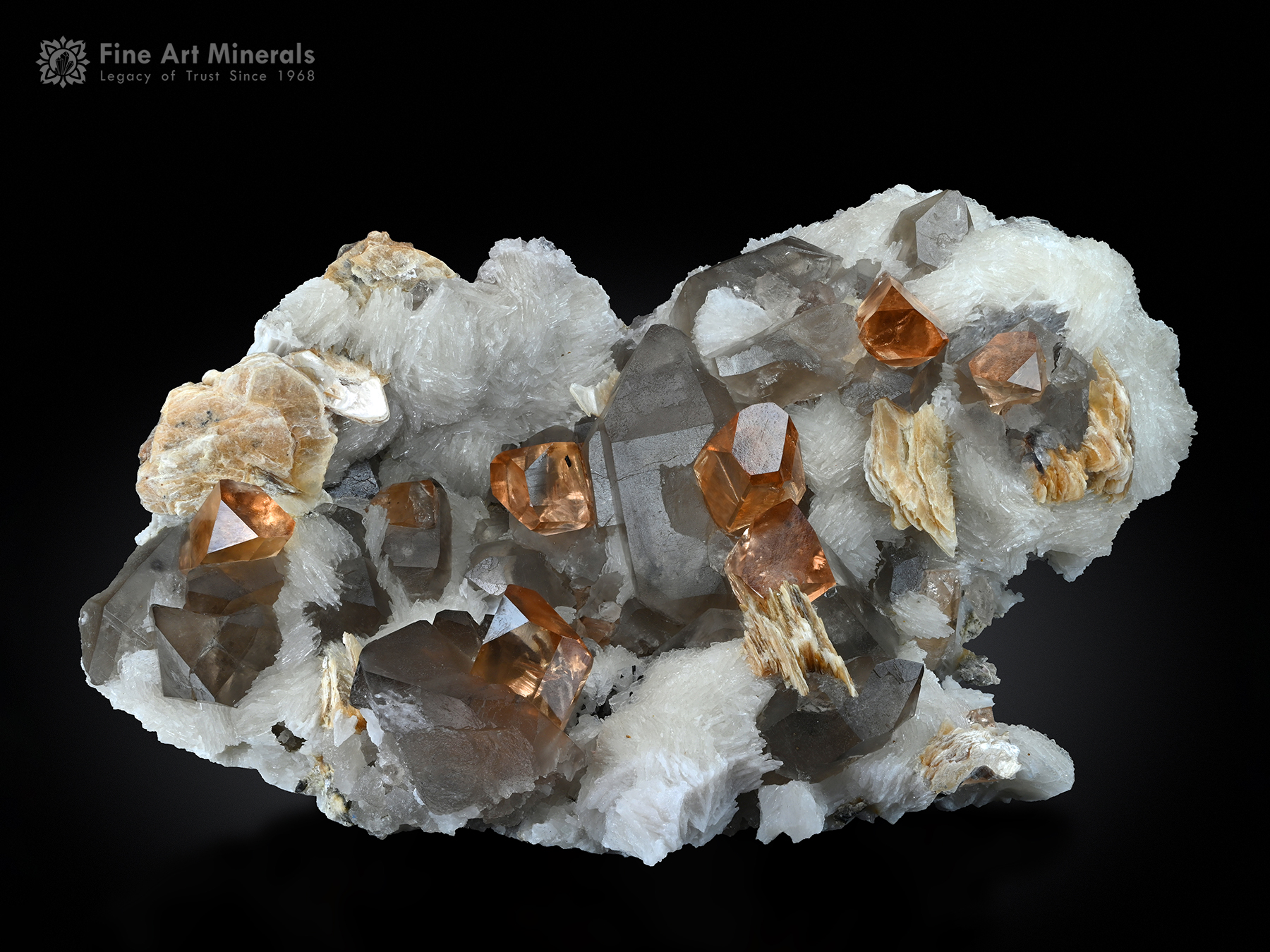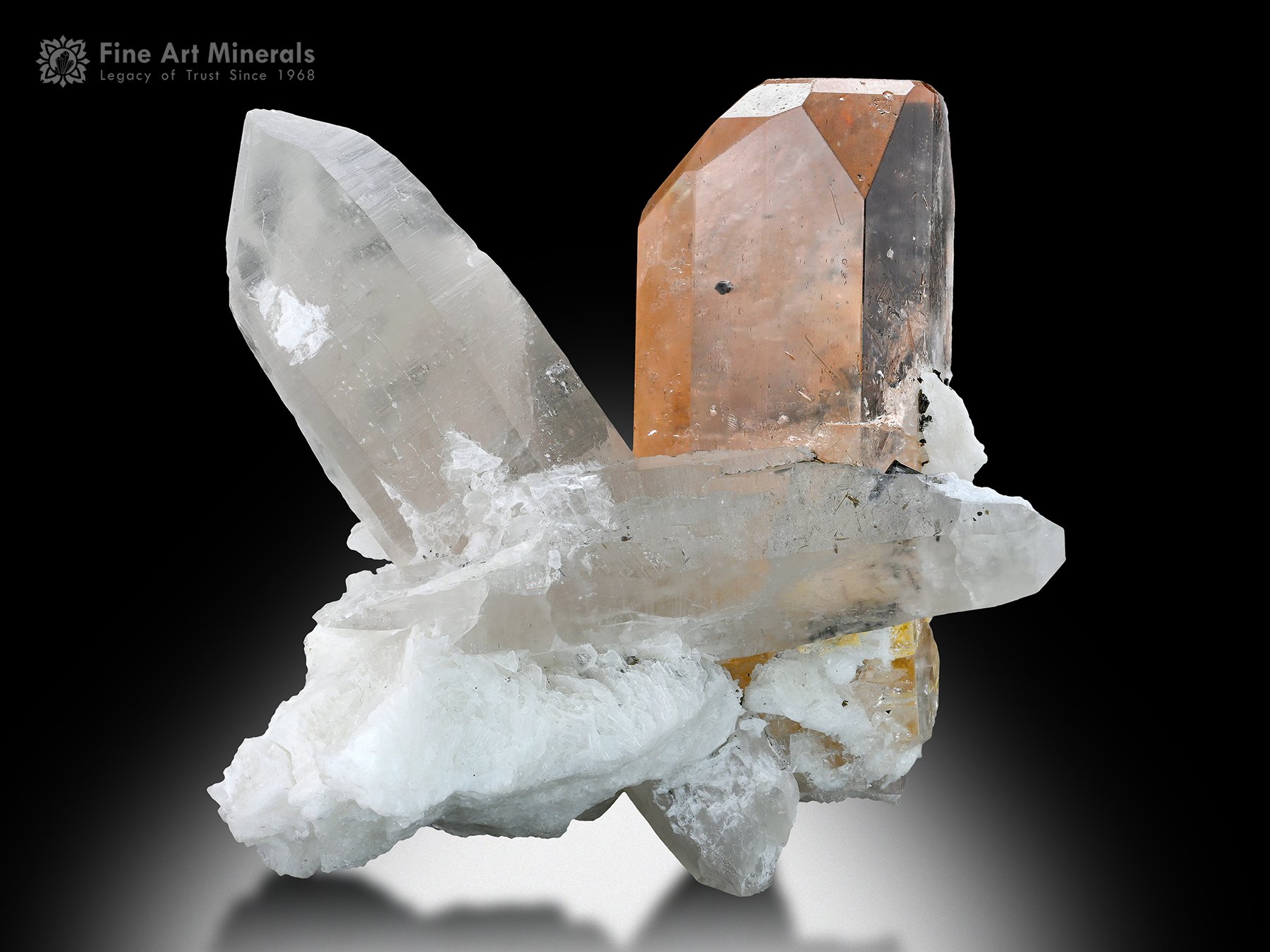Pink topaz, with its alluring blush and rose hues, has charmed jewelry enthusiasts and collectors for generations. Whether you’re shopping for a timeless piece or adding a touch of elegance to your collection, understanding the distinctions between natural and treated pink topaz is paramount.
This guide will take you on a captivating journey through pink topaz, unveiling the allure of natural specimens formed by the Earth’s forces and the science-driven enhancements that transform these gems.
Our purpose is clear – to provide you with the knowledge required for confident decision-making. The world of pink topaz is fascinating, but it can also be a maze of choices and considerations.
Table of Contents
ToggleWhat is Pink Topaz?
Pink topaz is a gemstone that embodies the subtle beauty of delicate pinks, ranging from the softest blush to more vibrant rose shades.
It belongs to the Topaz family, a group of minerals known for their striking brilliance and wide range of colors. Yet, within this spectrum, pink topaz stands out as a rare and captivating gem.
Rarity and Significance
Pink Topaz’s rarity is a testament to its appeal. Natural pink topaz is a gem of limited supply, mined in Pakistan.
It’s not only its scarcity that makes it precious; it’s the enchanting color and the allure it brings to jewelry. In the jewelry industry, pink topaz is often cherished for its elegance and versatility.
It complements a range of styles, from vintage classics to modern designs, making it a popular choice among designers and collectors.
Pink Topaz’s significance in the world of jewelry is undeniable. Its soothing, romantic shades make it a symbol of love and affection, often adorning engagement rings and other sentimental pieces.
Its rarity only adds to its desirability, making it an excellent choice for those seeking a unique and elegant gem to treasure.
Natural Pink Topaz
Origins and Formation
Natural pink topaz is a remarkable gem that emerges from the depths of the Earth. Found in Pakistan, this gem begins its journey as colorless or pale topaz.
Over millions of years, the Earth works its magic on these stones through a process involving heat and radiation, creating the enchanting pink hues that make pink topaz so unique.
Unique Characteristics
What makes natural pink topaz truly special is its untouched beauty. It possesses a delicate, radiant color that evokes feelings of romance and elegance.
Its exceptional clarity and transparency allow light to dance within, creating a luminous and ethereal glow.
When cut and polished, it takes on a variety of shapes, from classic round to modern pear or oval cuts, highlighting its charm.
Rarity and Price Range
Natural pink topaz is rare, and that’s part of what makes it so desirable. Its limited supply, combined with the intricate natural processes that form it, adds to its value and appeal.
The price of natural pink topaz can vary widely, depending on factors like color intensity, clarity, carat weight, and overall quality.
You can find pieces ranging from a few hundred dollars to several thousand.
But remember, owning a piece of natural pink topaz is not just owning a gem; it’s a connection to Earth’s history and a timeless beauty that holds a special place in the world of minerals and gemstones.
Treated Pink Topaz
Natural pink topaz is a testament to the Earth’s natural artistry, and now, let’s explore the world of treated pink topaz to understand how science and human ingenuity enhance its allure.
Enhancing Color and Clarity
Treated pink topaz undergoes a fascinating transformation to bring out its mesmerizing hues. Gem experts use various treatments to enhance the gem’s color and clarity.
One common method is heat treatment, where gentle heating helps intensify and improve the gem’s color.
Another process, irradiation, involves exposing the topaz to radiation, which can alter its color, achieving those enchanting shades of pink.
Reasons for Treatment and Impact on Value
Treating pink topaz serves an essential purpose – to make its alluring beauty more accessible.
Natural pink topaz is a rare find and often comes with a high price tag. Treatments offer a way to meet the demand for this gem.
However, it’s important to note that treated pink topaz may have a lower intrinsic value compared to its natural counterpart.
Collectors and gem enthusiasts sometimes prefer the authenticity of natural gems, valuing their rarity and unique character.
For those who appreciate the beauty of pink topaz but are budget-conscious, treated variations provide an attractive and more affordable option.
Durability of Treated Pink Topaz
While treated pink topaz gleams with radiance, it’s essential to consider its durability. The treatment processes, particularly irradiation, can influence the stone’s long-term stability.
Treated pink topaz may require a little more care and attention to maintain its beauty. It’s advisable to avoid excessive heat and prolonged exposure to strong sunlight to ensure its lasting charm.
Comparison: Natural vs Treated Pink Topaz
When it comes to pink topaz, you have choices to make. Let’s compare natural and treated pink topaz to help you make an informed decision:
| Aspect | Natural Pink Topaz | Treated Pink Topaz |
| Appearance | Radiant, pure color with exceptional clarity. | Vivid and appealing, though treatments may impact clarity. |
| Value | Higher intrinsic value due to rarity and authenticity. | Affordable option with less intrinsic value. |
| Market Demand | Highly sought after by collectors and enthusiasts. | Appeals to budget-conscious buyers and those who admire its beauty. |
| Ethical & Environmental Considerations | Mined naturally, generally considered more ethical. | Treatment processes may have environmental impacts. |
Ethical and Environmental Considerations:
Natural pink topaz is sourced through mining, which has its environmental and ethical challenges but can also support local economies.
Treated pink topaz involves industrial processes, including irradiation, which may have environmental impacts. When choosing between the two, consider your environmental and ethical priorities.
Illustrating the Differences:
Let’s explore these differences with some real-world examples:
Case Study 1: Sarah, an avid gem collector, chose a natural pink topaz for her engagement ring because she valued its rarity and authenticity.
Case Study 2: Alex, a budget-conscious shopper, opted for a treated pink topaz necklace for its affordability and vibrant color.
These cases illustrate how personal preferences and budget considerations can influence your choice between natural and treated pink topaz.
As you decide between these options, remember that both are stunning in their own right. The choice ultimately depends on your taste and values.
Choosing the Perfect Pink Topaz
So, you’ve decided to make pink topaz a part of your collection or a cherished gift. Here are some easy tips to ensure you make a smart and satisfying purchase:
1. Distinguishing Natural from Treated
Color and Clarity: Natural pink topaz often has a more pure and consistent color with exceptional clarity. Treated varieties may show slight variations or irregularities.
Certification: Request a gemstone certificate from your seller. It should specify whether the stone is natural or treated.
Ask Questions: Don’t hesitate to ask your seller about the origin and treatment history of the pink topaz. Reputable sellers are happy to share this information.
2. Reputable Sellers and Certifications:
Choose Trusted Sellers: Stick to well-established and reputable sellers. They are more likely to provide accurate information about their stones.
Certification: Always ask for a certificate of authenticity, and ensure it’s from a recognized gemological authority. This can confirm the gem’s natural or treated status.
3. Factors to Consider:
Budget: Determine your budget and stick to it. Whether you’re buying natural or treated pink topaz, set a clear price range.
Purpose: Think about why you’re purchasing the pink topaz. Is it for daily wear, a special occasion, or a collector’s piece? This will help guide your choices.
Personal Taste: Consider your style and the shade of pink that resonates with you. Pink topaz comes in various shades, so pick the one that appeals to you most.
Making an informed decision is essential, and these tips will help you navigate the world of pink topaz with confidence. Remember, there’s no right or wrong choice – it’s about finding the pink topaz that speaks to you.
Conclusion
In our exploration of pink topaz, we’ve ventured into a realm of captivating beauty and choice. We’ve learned about the distinct appeal of natural and treated pink topaz, each with its charm.
Natural pink topaz, born from the depths of the Earth, boasts unrivaled clarity and an untouched, radiant beauty. Its rarity and authenticity make it a prized gem, cherished by collectors and enthusiasts.
Treated pink topaz, on the other hand, undergoes transformations that enhance its color and brilliance. While it may lack the natural gem’s intrinsic value, it offers an affordable option for those who admire its captivating hues.
So, the question arises: which is the better choice? The answer, in the world of pink topaz, is subjective. Natural pink topaz exudes the allure of authenticity and history, while treated pink topaz shines with affordability and vibrancy.
Your choice should reflect your unique taste and values.
As you set forth on your pink topaz journey, keep in mind the importance of being an informed buyer. Seek out reputable sellers, inquire about the gem’s origin and treatment history, and, when possible, request a certificate of authenticity.
In the world of pink topaz, both natural and treated varieties have their unique appeal.
Your selection is a testament to your style and values. May your journey be as radiant as the gem you choose.
So, this is the complete information about Natural vs Treated Pink Topaz, If you have any kind of suggestions or questions, feel free to ask in the comment section below.
OR
You can also contact us if you want any kind of Minerals and Gemstones.
Thanks for Reading.






























